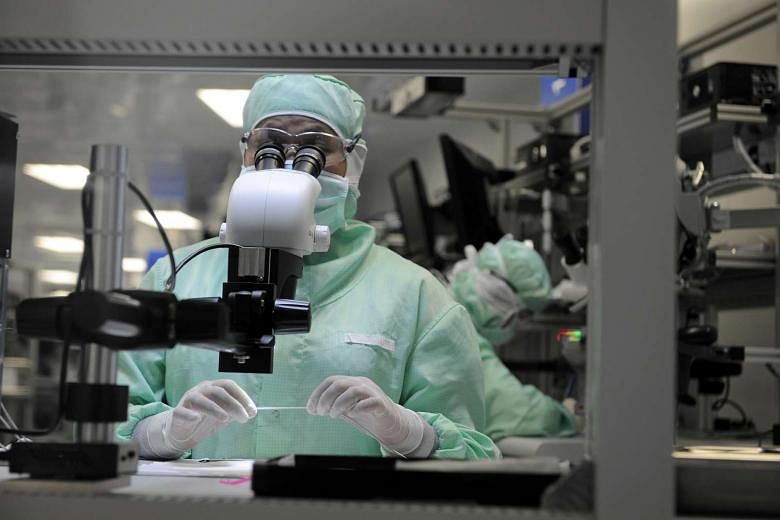Factory output in Singapore suffered a worse-than-expected 4.7 per cent slide last month, hurt by still-weak global demand as well as the fallout from ongoing economic restructuring, economists say.
The drop-off in output was deeper than the 3.7 per cent year-on-year contraction forecast in a Reuters survey.
Excluding the biomedical sector, which grew 5.8 per cent last month, overall output would have fallen by a significantly larger 7.4 per cent, the Economic Development Board (EDB) said yesterday.
After adjusting for seasonal factors, industrial production fell 4.8 per cent last month. If biomedical manufacturing were to be stripped out, output would have fallen 2.1 per cent.
The heavyweight electronics cluster went back into contraction mode in February, after staging 3.6 per cent growth in January.
Electronics output fell 8.4 per cent last month as sharp declines in semiconductors, infocomms and consumer electronics and computer peripherals outweighed growth in data storage and other electronic modules and components.
"January was an aberration, with electronics and biomedical manufacturing performing better due to inventory building ahead of Chinese New Year. February is a true reflection of the current state of manufacturing, which is still entrenched in recession due to the global slowdown," ANZ economist Ng Wei Wen said.
Ms Selena Ling, OCBC Bank's head of treasury research and strategy, said the uptick in January was possibly due to "front-loading in semiconductors and other electronic modules ahead of the Chinese New Year holidays".
"If not for January's positive blip, electronics output would have shrunk for 13 straight months," she said.
Transport engineering performed the worst, posting a 14.5 per cent slump in February, as the marine and offshore engineering segment contracted 23.1 per cent. That was due to lower rig-building activity and weaker demand for oil and gas field equipment with oil prices still very low.
Biomedical manufacturing continued to be the star performer, expanding for the second straight month in February, after surging 29.6 per cent year-on-year in January, buoyed by both pharmaceuticals and medical technology.
The chemicals cluster also saw modest growth of 1.2 per cent in February as stronger output in specialities and other chemicals offset weakness in petroleum and petrochemicals.
But apart from these two sectors, manufacturing output declined across the board.
Precision engineering fell for the 11th straight month by 7.5 per cent year-on-year in February, with both machinery and modules and components underperforming. Output of general manufacturing fell 0.3 per cent year on year.
OCBC is downgrading its first- quarter economic growth forecast to 2.2 per cent year-on-year from 2.3 per cent because of weaker manufacturing performance. "The risk of a technical recession, if it materialises, may revolve around the second or third quarter this year," Ms Ling said.
"Singapore's manufacturing sector is not out of the doldrums yet, but we remain optimistic that there could be some pickup in manufacturing growth in the second half," said UOB Global Economics and Markets Research. "We maintain our 2016 industrial production forecast of 2.5 per cent growth."


